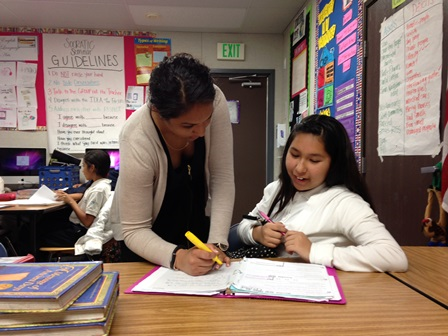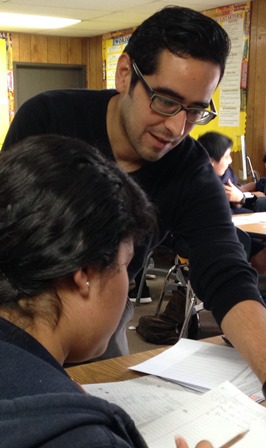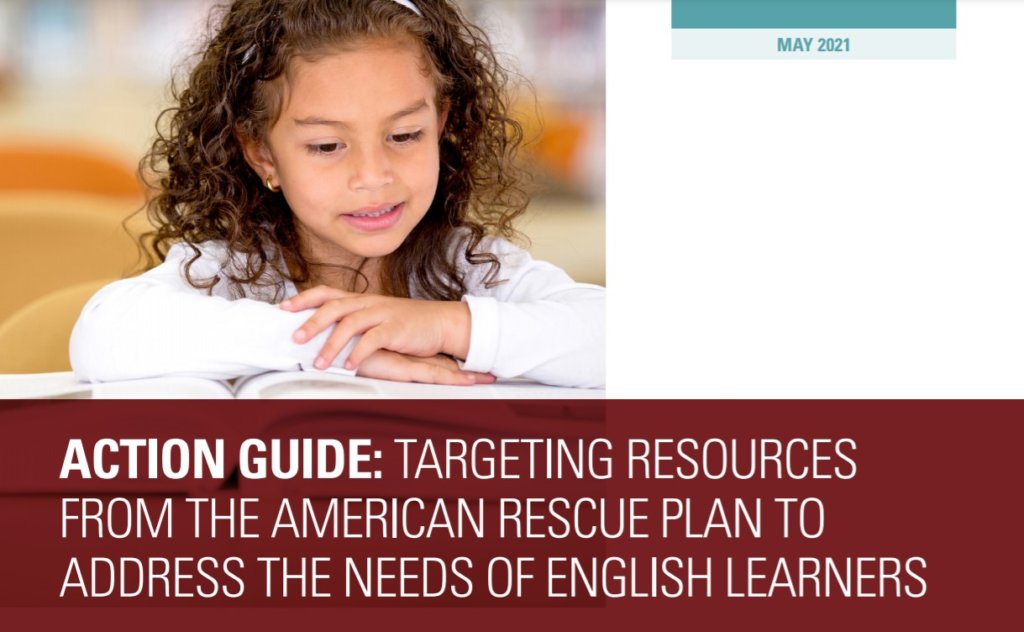Go Slow to Go Fast
By Kevin Myers, National Institute for Latino school Leaders Fellow, NCLR
(Cross-posted from the National Institute for Latino School Leaders Blog)
 Students walk into a classroom with an innate trust in teachers. They trust teachers to educate, to support academically and emotionally, and they trust teachers to guide them through a year of overall development. With all of the different facets of teaching and the pressure of testing accountability bearing down on them, balancing the needs of all students is a difficult undertaking. To be effective, teachers need to juggle many different tasks, countless student needs, and hundreds of varying resources.
Students walk into a classroom with an innate trust in teachers. They trust teachers to educate, to support academically and emotionally, and they trust teachers to guide them through a year of overall development. With all of the different facets of teaching and the pressure of testing accountability bearing down on them, balancing the needs of all students is a difficult undertaking. To be effective, teachers need to juggle many different tasks, countless student needs, and hundreds of varying resources.
Keep up with the latest from UnidosUS
Sign up for the weekly UnidosUS Action Network newsletter delivered every Thursday.
When working with populations of students with a high percentage of English learners, maintaining focus and balancing all of these plates at once is even more important. It’s easy to get lost in the myriad of “To Dos” that pop onto a teachers task list, but I believe there are three important strategies that teachers need to use on a daily basis to ensure that they are effective with their English learners and with all of their students. In order to maintain that innate trust students have in educators, we must initiate frequent checks for understanding, provide meaningful and immediate feedback, and build relationships with kids.
As the kids pile through the classroom door, a million different cues and must-dos run through a teacher’s head. Attendance, Do Nows, passing back work, classroom procedures, correcting behavior, and starting a lesson are all thoughts zooming around in a teacher’s mind, colliding with each other and creating a lot of internal chaos. When this happens to me, I like to think back to something I heard during an Inquiry by Design professional development session. The trainer said to the class, “You need to go slow so you can go fast.” This seems like a paradox at first, but in actuality, it’s wonderful advice! When all of the tasks and stresses of teaching start to collide, it’s imperative for teachers to take a breath and slow down. One strategy for slowing down is to plan frequent checks for understanding into a lesson.
 Kids need for teachers to focus on the lesson and what is currently being taught, not what else still needs to be done during that period. When teachers use strategies like Think-Pair-Share, Thumbs-Up/Thumbs-Down, or evaluating an idea by showing a number of fingers (1-4 seems to be effective), kids have time to process what is being taught during the lesson. By intentionally taking the time to pause and check in with students, teachers are ensuring that kids are ready to move on to the next step. When the kids are ready to move on, teachers won’t have to spend stressful minutes going back and re-teaching. If teachers take time to make sure kids are with them through checks for understanding, they will definitely be more effective with all students, including our English learners.
Kids need for teachers to focus on the lesson and what is currently being taught, not what else still needs to be done during that period. When teachers use strategies like Think-Pair-Share, Thumbs-Up/Thumbs-Down, or evaluating an idea by showing a number of fingers (1-4 seems to be effective), kids have time to process what is being taught during the lesson. By intentionally taking the time to pause and check in with students, teachers are ensuring that kids are ready to move on to the next step. When the kids are ready to move on, teachers won’t have to spend stressful minutes going back and re-teaching. If teachers take time to make sure kids are with them through checks for understanding, they will definitely be more effective with all students, including our English learners.
With a million things on our minds, it would be easy for an educator to get bogged down in the stress and the obligation of everyday work. But if we peel back the curtain to get a glimpse of the reason we all got into this field, we will see the students. We all want to be effective educators so our kids can be successful, and if we take the time to go slow- to check for understanding, to provide feedback, and to build relationships- we will be effective indeed.


